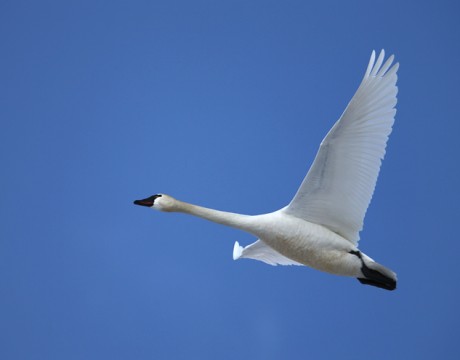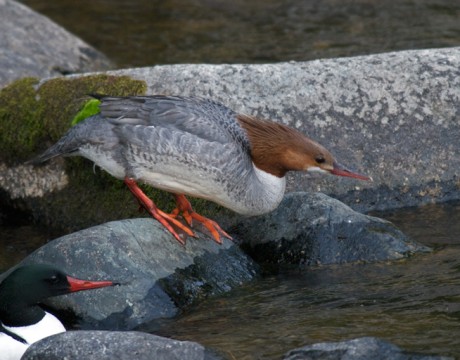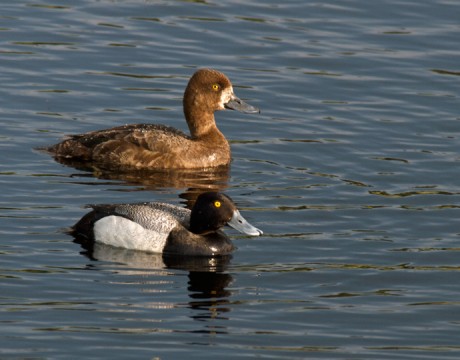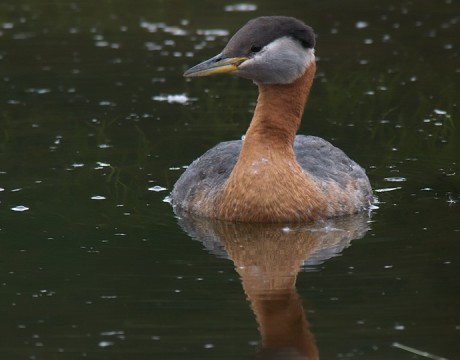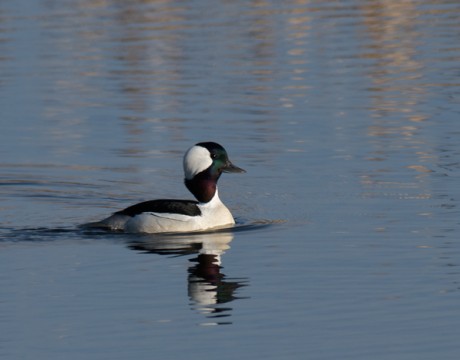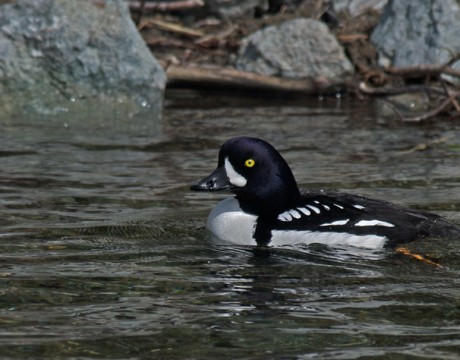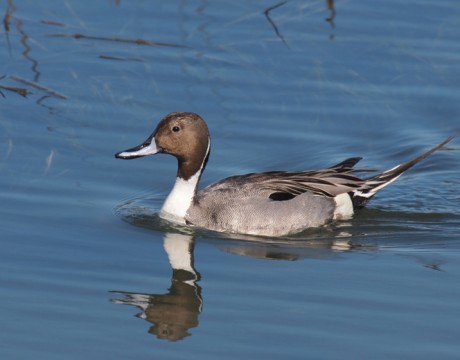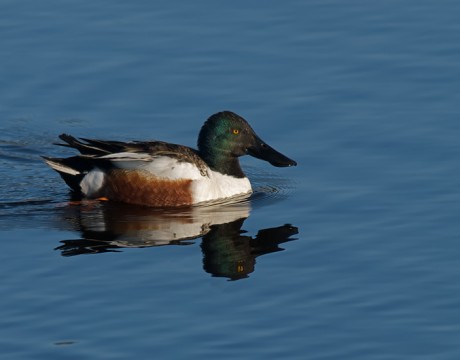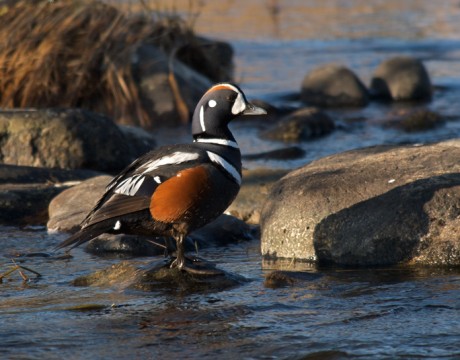Bird of the Week – Tundra Swan
While a little smaller than it’s Trumpeter Swan cousin, the Tundra Swan is a big bird, weighing in at just under 14 pounds. They are truly lovely in flight. The “ski jump” shape to the bill, as opposed to the Trumpeter’s wedge-shape, as well as the yellow patch at the corner of the eye, distinguish Tundras from Trumpeters. The size difference is difficult to judge unless you have both species, side by side, in the field. For more bird photos, please visit Frozen Feather Images.
Bird of the Week – Greater White-fronted Goose
The Speckle-belly, as it’s known to hunters, is a medium-sized goose that mostly breeds in coastal Alaska, but is a fairly common sight in Alaska in spring migration. It’s impossible to mistake a Speckle-belly for any other bird in Alaska; the orange bill with the white line is definitive. For more bird photos, please visit Frozen Feather Images.
Bird of the Week – Common Merganser
The Common Merganser breeds south of the Brooks Range in Alaska, in wooded areas along clearwater streams. The female has that excellent spiky hairdo feather-do; the male is a bit plainer, but both have the bright orange bill that is a good field mark for these birds, although you want to be sure you don’t have a Red-breasted. They are one of the less common ducks in Alaska, but you can usually find them canoeing a clear water river. Most years there’s a pair on the West Fork of the Upper Chena River. This is a fish-eating duck; that long…
Bird of the Week – Lesser Scaup
Lesser Scaup is another species of marsh and sea duck that breeds far inland in Interior Alaska. Lesser Scaup are notoriously difficult to tell from their close cousins, Greater Scaup. Their ranges overlap, too. But by slight differences in the head, neck and pattern on the back, you can usually tease the two apart. These birds were at the Peat Ponds, one of the better birding spots around Fairbanks. The photo was taken in the fall of 2013. The female has moved into eclipse plumage; the male is still in breeding plumage. For more bird photos, please visit Frozen Feather Images.
Bird of the Week – Red-necked Grebe
The Red-necked Grebe is the larger of Alaska’s grebe species. North American Birds described this species as “territorial and interspecifically aggressive, commonly threatening or making underwater attack dives against other waterbirds that enter its breeding territory.” It’s a bully, and a raucous, noisy bully at that. That’s right; it’s a Redneck. It typically nests on slightly larger ponds than its smaller cousin, the Horned Grebe. Unlike most waterbirds, this grebe builds its nest on a floating nest of bulrushes. If the water rises, the nest floats up, instead of being drowned. For more bird photos, please visit Frozen Feather Images.
Bird of the Week – Bufflehead
North America’s smallest diving duck is the Bufflehead. With his dramatically colored head– it looks like a white dome from a distance – this is another easy waterfowl to identify in the field. This duck winters in salt water, but nests in the boreal forest in tree cavities. Or boxes if someone has put a box up near a pond. The kids, at 1-2 days old, jump from the nest cavity to the ground and then follow the hen to the nearest body of water. The Bufflehead is a close relative of last week’s Goldeneyes. For more bird photos, please…
Bird of the Week – Northern Pintail
If last week’s bird is obvious for its bill, the Northern Pintail is famous for the drake’s namesake tail. Apart from the impressive tail, the white stripe extends up into the chocolate brown neck and the bill is silver and black. Altogether a handsome bird. Like the Northern Shoveler, the Pintail is a dabbler, foraging in the top of the water column. As often as not, what you see are duck butts. For more bird photos, please visit Frozen Feather Images.
Bird of the Week – Northern Shoveler
The Northern Shoveler’s bill gets all the attention, distracting you from noticing that the drake and the hen are both very handsome ducks. Shovelers are dabblers, birds that feed in the top of the water column without diving entirely underwater. The Shoveler’s bill is well-adapted to that role. The Shoveler hen is much less flamboyant, with cryptic coloration that makes her hard for predators to find when she is on eggs. Some ornithologists speculate that the male hangs around as a distraction for predators until the eggs are hatched. But that is quite a bill, isn’t it? For more bird…
Bird of the Week – Harlequin Duck
For the WC, only the Wood Duck is more spectacularly colorful than the a Harlequin Duck drake in breeding plumage. And, unlike Harlies, Woodies don’t occur in Alaska. Not only are Harlequin drakes handsome; they seem to pose in striking nice positions. So far as WC knows, Harlequin drakes only have one critic: Harlequin hens. Readers are invited to offer their own caption to the photo. Harlequin Ducks migrate inland to breed and then return to their true home, near-shore salt waters in coastal Alaska and the Pacific Northwest. For more bird photos, please visit Frozen Feather Images.





